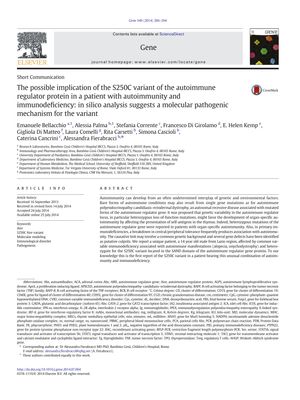The Possible Implication of the S250C Variant of the Autoimmune Regulator Protein in a Patient with Autoimmunity and Immunodeficiency: In Silico Analysis Suggests a Molecular Pathogenic Mechanism for the Variant
July 2014
in “
Gene
”

TLDR The S250C variant in a gene may cause autoimmunity and immunodeficiency by impairing protein function.
The study reported a unique case of a 14-year-old male with common variable immunodeficiency and autoimmune manifestations (alopecia, onychodystrophy) who was heterozygous for the S250C variant in the autoimmune regulator gene. In silico analysis suggested that the S250C variant, located in the SAND domain, introduced a cysteine surrounded by cationic residues, which lowered its pKa and increased its chemical reactivity. This enhanced reactivity likely impaired protein function, contributing to the patient's phenotype when combined with other genetic or environmental factors. This was the first report of the S250C variant in such a clinical context, providing new insights into the pathogenesis of autoimmunity and immunodeficiency.


